|
|
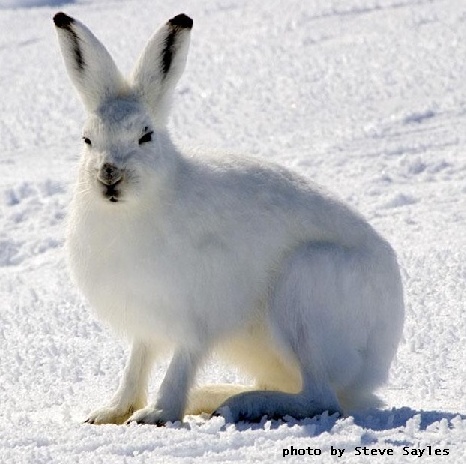
HOME - RANGEThe Arctic hare lives throughout the tundra of Canada from Newfoundland to Nunavut and the Northwest Territories. It is also found on Arctic islands and Greenland. The Arctic hare lives in both mountainous and lowland areas. It likes places where plants grow quickly during the short summer season. For the winter it prefers sheltered areas where it does not have to dig in deep snow to search for food.
APPEARANCE
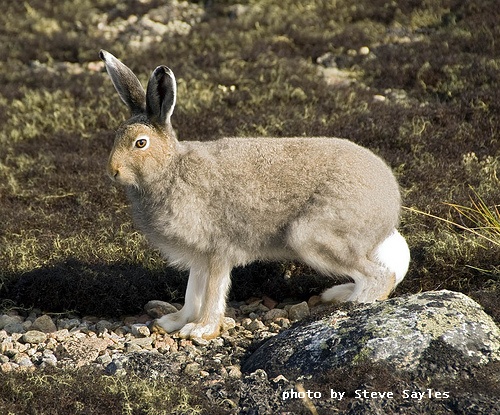 In areas where summer is longer, the coat of the hare turns brownish FOODTHE YOUNGThe young are born in late May, June, or July, depending on where they live. The farther north they are, the later the babies are born. Females may produce a second litter in one season. Average litter size is five babies. The grey-brown babies (called leverets) are born in a small dent in moss or grass. Dry plants or fur from the mother lines the nest. The nest is often hidden behind a rock or bush. The babies are covered with fur and their eyes are wide open.
The mother does not leave her babies for the first 2 to 3 days.
By the third day the young are able to lie very still. They almost look
like the rocks and grass around them .
The young gain 45 to 50 grams per day in their first
month and no longer need mother's milk by the time they are a month old.
By September they are the size of the adults.
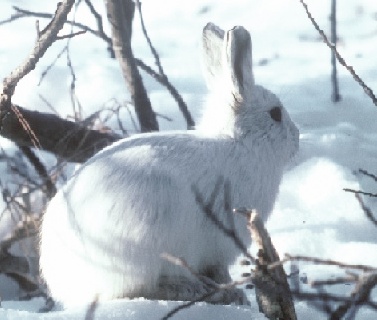 BEHAVIOR / ADAPTATIONThe Arctic hare's coat grows longer and thicker for the winter. They have a short thick undercoat protected by a longer top coat. The white fur makes the hare difficult to spot in the snow. It has small ears which lose less body heat than larger ears. To keep warm and conserve energy, a hare will tuck in its tail, paws and ears and sit still for hours. Hares will form large groups. While some rest and feed the others act as guards. They gather together in the snow, under bushes or behind rocks. They also dig tunnels (dens) in the snow. When alarmed they rise up on their hind legs to look for danger and then bound off very quickly . Hopping up on their hind legs like a kangaroo, they can reach speeds of 64 km. per hour. The hare can swim across narrow streams.
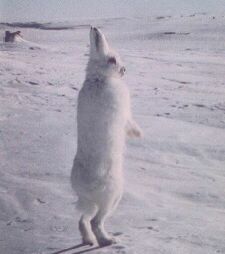
image credit : David R. Gray, Canadian Museum of Nature ENEMIESPROTECTION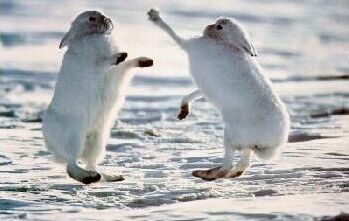
Hares may fight. They box, scratch and snap at one another but they do not bite.
|
|
CANADIAN ANIMALS |
ARCTIC ANIMALS |
by J.Giannetta credits:
Regina, Sk.,Canada
June, 2000
updated August 2011
photos of Arctic Hare - by Steve Sayles, Flickr.com ; license : Creative Commons 2.0
information and photos : Ukaliq, the Arctic Hare site at Nature.ca